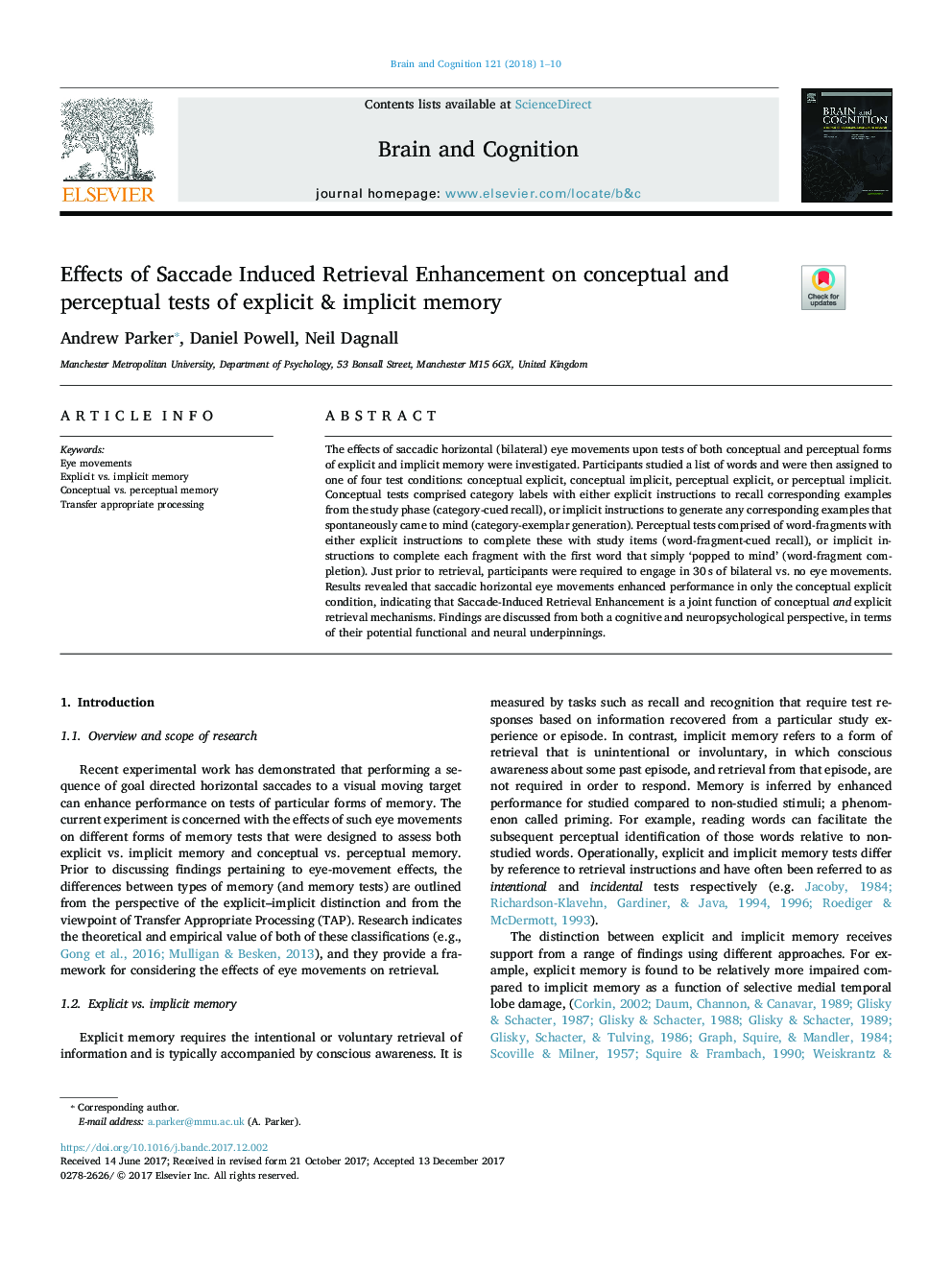| Article ID | Journal | Published Year | Pages | File Type |
|---|---|---|---|---|
| 7282716 | Brain and Cognition | 2018 | 10 Pages |
Abstract
The effects of saccadic horizontal (bilateral) eye movements upon tests of both conceptual and perceptual forms of explicit and implicit memory were investigated. Participants studied a list of words and were then assigned to one of four test conditions: conceptual explicit, conceptual implicit, perceptual explicit, or perceptual implicit. Conceptual tests comprised category labels with either explicit instructions to recall corresponding examples from the study phase (category-cued recall), or implicit instructions to generate any corresponding examples that spontaneously came to mind (category-exemplar generation). Perceptual tests comprised of word-fragments with either explicit instructions to complete these with study items (word-fragment-cued recall), or implicit instructions to complete each fragment with the first word that simply 'popped to mind' (word-fragment completion). Just prior to retrieval, participants were required to engage in 30â¯s of bilateral vs. no eye movements. Results revealed that saccadic horizontal eye movements enhanced performance in only the conceptual explicit condition, indicating that Saccade-Induced Retrieval Enhancement is a joint function of conceptual and explicit retrieval mechanisms. Findings are discussed from both a cognitive and neuropsychological perspective, in terms of their potential functional and neural underpinnings.
Related Topics
Life Sciences
Neuroscience
Cognitive Neuroscience
Authors
Andrew Parker, Daniel Powell, Neil Dagnall,
